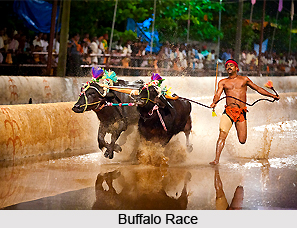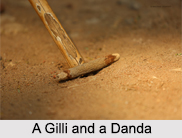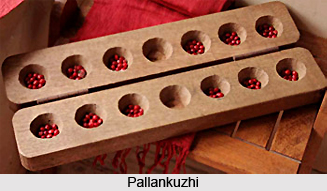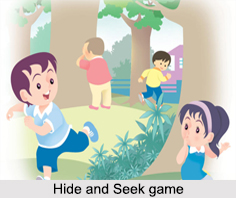 Ludo is a Latin word that means "I Play". This is a simple and easy board-game that can be played by two to four players. In this game the players race their tokens from beginning to end according to count of dice rolls. Just like other circle and cross game, it is same as the Indian Pachisi, but a much simpler form. This game is very popular in many countries, under variety of names.
Ludo is a Latin word that means "I Play". This is a simple and easy board-game that can be played by two to four players. In this game the players race their tokens from beginning to end according to count of dice rolls. Just like other circle and cross game, it is same as the Indian Pachisi, but a much simpler form. This game is very popular in many countries, under variety of names.
History of Ludo
The game of Pachisi originated during the 6th century in India. The earliest depiction of this game is found in the paintings in the cave paintings of Ajanta.
Earlier this particular game was played by various Mughal Emperors of India, namely Akbar, who played the game of Pachisi using women from his harmen. During the 19th century the variation of the game was made in England. In 1896, one of the variations appeared under the name of Ludo which was successfully patented. This game is known under various names in different nations like in North America they call it "Parcheesi", and in Germany it is known as ""Mensch „rgere dich nicht" which means "Man, don`t get irritated". Likewise it has its equivalent name in Bulgarian, Czech, Dutch, Serbo-Croatian and Slovak. People in Sweden know it by the name "Fia". However, it is known as Ludo in Norway and Denmark.
Ludo Board
Normally, a ludo board is square marked with a cross. Each arm is divided into three columns, with columns further divided into six squares, usually. The centre of the cross is the finishing square that is generally divided into four coloured triangles. Each of the triangles is united with a coloured middle column that appears as an arrow directing to the finish. The beam of each arrow is a player`s "Home Column" and is actually five squares long.
 To the left hand side of each column, one square from the edge of the board is a large staring square, also coloured with four smaller therein, on which four pieces are placed of each player. During the run of play a piece moves from the initial position, clockwise around the perimeters of the board, and up the player`s home column to the finishing square.
To the left hand side of each column, one square from the edge of the board is a large staring square, also coloured with four smaller therein, on which four pieces are placed of each player. During the run of play a piece moves from the initial position, clockwise around the perimeters of the board, and up the player`s home column to the finishing square.
This is opposite to pachisi that runs counter clockwise. In the space to the left of each arm is a square or a circle to hold a players piece before they are allowed into the play. Here there is no resting square, unlike in pachisi. But the coloured home column may only be entered by the token of its own players. However, the game of Ludo played in India has a resting place in each of the quadrants, normally the fourth square from the top in the right most columns. These spaces are generally marked with a star. The board has areas that are coloured bright, most cases with red, yellow, blue and red. In some boards the colour may vary though. Each player actually uses plastics, cardboard etc. tokens of matching colour.
Rules of Ludo
At the beginning of the game the four pieces of a player is placed in the starting area of their colours.
Players throw the dice when their turn arrives. At the start a player must throw a six in order to move the piece from the starting point onto the square. In each of the subsequent turn the piece moves forward 1 to 6 squares as depicted by the die. As a player throws a 6 he may bring a new piece onto the playing square or may also choose to move an already existing piece. The player, on throwing a six, is also granted another turn as bonus. But if the six is rolled thrice in a row then it is considered as a foul and as a result the player loses his turn.
If a particular player gets a 6 he can separate chances (players can separate 6 on one piece and 4 on other if he gets a 6 and 7, if the pieces are already out of the house). The player can also choose to play the number (6 and 4) using the same piece in any particular order. In case a player is unable to make a valid move then he must pass the die to next player.
In case the piece of a player lands on a square containing a piece of his opponent, then the opponent`s piece is captured and returned to the starting position. A piece may not land on a square that previously contains a piece of the same colour (unless playing doubling rules)
Once a particular piece has completed a full circuit of the ludo board, it then moves up the home column of its individual or home colour. The player must throw the exact number to advance to the home square. The winner is the first to get all four of their pieces onto the home box (square).
More Information on Indian Traditional Sport



















